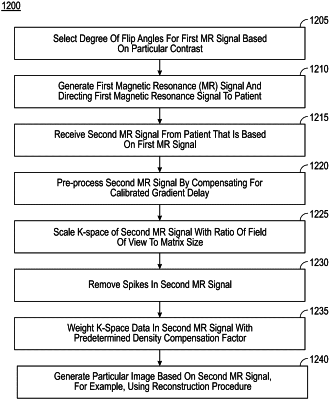| CPC A61B 5/0042 (2013.01) [A61B 5/055 (2013.01); G01R 33/561 (2013.01); G01R 33/5602 (2013.01)] | 19 Claims |

|
1. A non-transitory computer-accessible medium having stored thereon computer-executable instructions for generating at least one particular image which is at least one of (i) at least one quantitative image of at least one section of at least one patient or (ii) at least one non-synthetic contrast image of the at least one section of the at least one patient, wherein, when a computer arrangement executes the instructions, the computer arrangement is configured to perform procedures comprising:
generating a first magnetic resonance (MR) signal and directing the first MR signal to the at least one patient;
receiving a second MR signal from the at least one patient that is based on the first MR signal;
generating the at least one particular image based on the second MR signal; and
generating MR information based on the second MR signal by:
pre-processing the second MR signal by compensating for a calibrated gradient delay,
scaling k-space of the second MR signal with a ratio of a field of view to a matrix size,
removing spikes in the second MR signal, and
weighting k-space data in the second MR signal with a predetermined density compensation factor,
wherein the at least one particular image is generated based on the MR information.
|